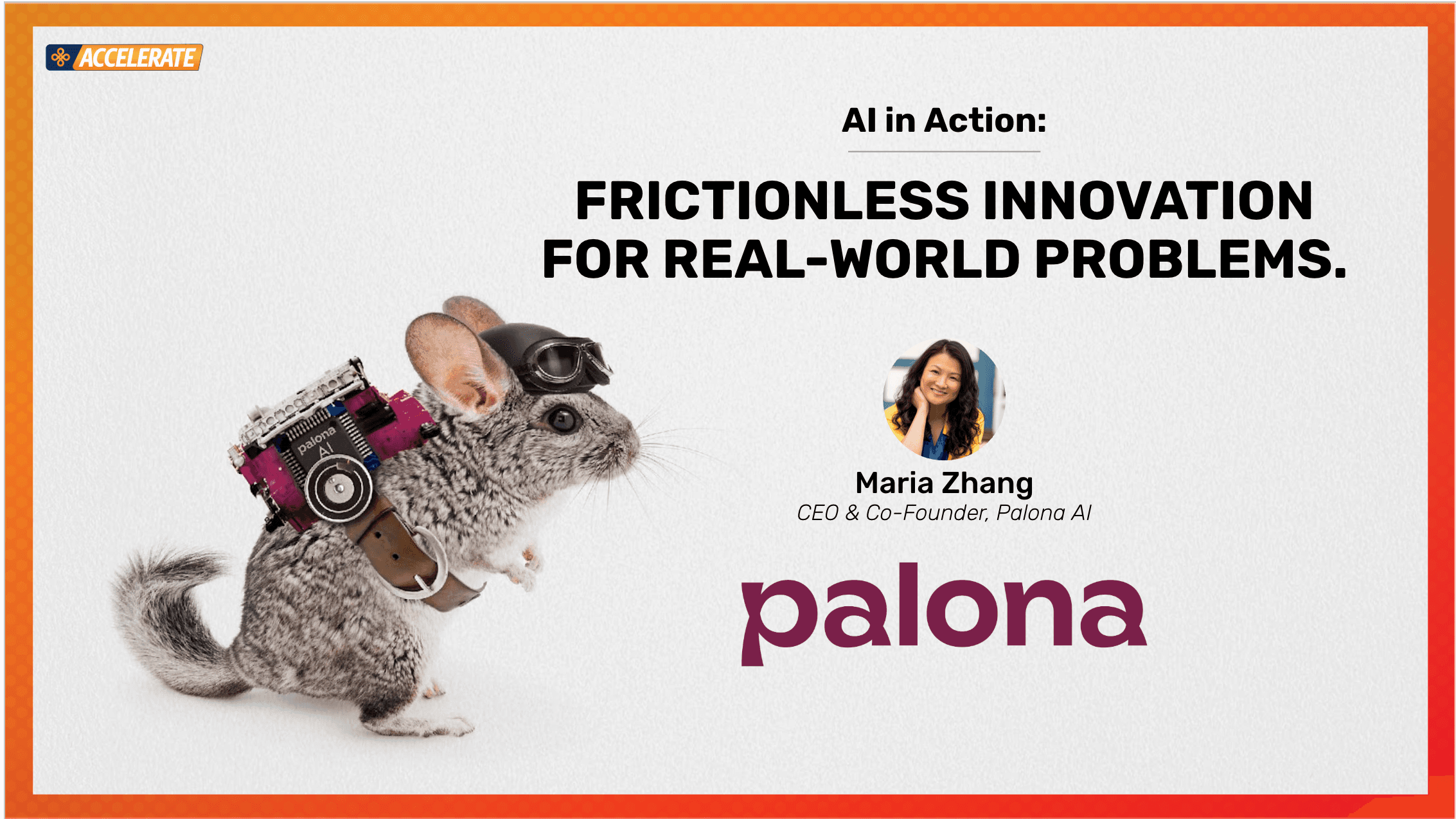The Three Questions That Define Restaurant AI Success

At this year’s Prosper Accelerate conference – “Accelerate the Development of Your Leadership Talent”, I led a workshop on AI in Action: FRICTIONLESS INNOVATION FOR REAL-WORLD PROBLEMS.
We started with an icebreaker: “Do you recognize this animal?” I held up a photo of a chinchilla. After a few guesses, I revealed it’s also the name of a language model from DeepMind, a lighthearted way to remind everyone that behind every new AI term is a technology designed to help humans, not replace them.
My background spans consumer tech, from VP at Instagram to CTO at Tinder during its growth from a small West Hollywood startup to a billion-dollar global brand. What made that journey meaningful wasn’t the scale but the stories: wedding invitations and baby announcements from couples who met on the app. Technology is most powerful when it amplifies human connection.
That same philosophy drives everything we build at Palona. And it framed the central question of the workshop:
How can restaurant operators cut through the AI hype and identify solutions that actually work?
The answer emerged from the participants themselves—in three questions that define whether any technology deserves a place in your operation.
1. Does This Improve Your Team’s Day-to-Day Experience?
We began by asking: What keeps you up at night? Where do you feel the most friction?
The first wave of answers centered on labor pressure: the challenge shaping nearly every restaurant’s reality. Trey, who runs nine Mesero restaurants across Dallas, Oklahoma, and Tennessee, said:
“I don’t have a CFO for 600 employees. AI is already helping us manage operations we couldn’t handle before.”
The math is unforgiving. Restaurants can’t hire their way out of this. Costs are high, qualified talent is scarce, and turnover hovers around 75%. Phones ring nonstop, but no one can staff a full-time call handler. Catering managers juggle inquiries between events, answering emails at red lights.
This is where AI removes real friction. At Cali BBQ on Father’s Day 2025, Palona’s Voice AI answered 150 calls—calls that used to pull servers off the floor or go straight to voicemail. The impact was immediate: servers stayed focused on guests, table turns improved, and everyone on the team preferred it. No one missed answering phones during the rush.
It’s worth recalling that “computer” once described a profession, humans employed to compute. Machines took over that work, and society adapted. The restaurant industry faces a similar transformation, but with one advantage: people will always gather around food. We’re in the business of creating moments that matter, something technology can support, but never replace.
2. Does This Improve the Guest Experience?
The second theme was consistency, the foundation of repeat business and brand trust.
One table discussed maintaining standards across locations and shifts. Another raised concerns about authenticity, with an operator admitting:
“I used to write well. Now when I read posts online, I have to wonder if the person actually wrote them. That’s maddening.”
Guests want authenticity, but they also expect speed, accuracy, and ease. They don’t mind if the first interaction is AI, as long as it’s helpful, consistent, and human-sounding.
Consistency becomes exponentially harder as you scale. A single poor experience can undo ten good ones. Many operators use secret shoppers at $50–$150 per visit to monitor service. Computer vision AI now provides that feedback continuously, tracking food quality, service standards, and brand compliance without the delay or cost.
At Cali BBQ, pickup orders doubled on Father’s Day compared with the prior year, not just because more calls were answered, but because every call was answered consistently well. Natural, accurate conversations turned ordering into a frictionless experience.
The best technology doesn’t feel like technology. It feels like hospitality.
3. Does This Improve Profitability?
The third cluster focused on cost management: the universal pressure point as ingredients rise, labor costs climb, and guests reach their price limits.
Several groups quickly connected the dots:
“These three problems aren’t separate. They’re a cycle. Solve labor pressure and your team is happier. Happy teams deliver consistency. Consistency builds loyalty. Loyalty drives margins. Better margins let you reinvest in your team.”
That cycle came to life in the Cali BBQ example. Same menu, same prices, same kitchen—the only difference was Voice AI handling every call. The result: an 18% revenue increase, driven by capturing every order opportunity and improving service flow.
AI can also optimize forecasting. Rising food costs and overproduction create waste; underproduction means missed revenue. AI models that factor in weather, seasonality, and local events can predict demand far more accurately, helping operators protect margins while keeping guests happy.
When asked which challenge felt most urgent, the answers circled back to labor, consistency, and cost, three interconnected levers of AI success.
From Questions to Action: The Four Stages of AI Readiness
Understanding what AI can do is only the first step. Turning potential into performance requires a roadmap:
Thinking — Understand what AI can realistically do for your operation, beyond the headlines.
Interacting — Move from theory to practice. Test tools, gather data, and learn through use.
Achieving — Measure results rigorously. Scale what works and drop what doesn’t.
Leading — Share insights and champion innovation within your organization and the industry.
This framework mirrors leadership development itself. As foodservice evolves, building fluency in AI will be a key differentiator for emerging leaders—the very people Prosper Accelerate was designed to empower.
The Pitfalls Worth Avoiding
Not every AI rollout succeeds. The failures offer valuable lessons:
Start small. Some national chains launched AI across hundreds of units, only to roll it back after going viral for the wrong reasons. Begin with three locations, not thirty.
Mind both sides of the experience. Taco Bell’s AI drive-thru pilot technically worked. But guests shouted into the mic, straining staff wearing headsets. It became a viral moment, but at a real human cost. Every innovation must account for both guests and employees.
Measure everything. The 18% lift at Cali BBQ wasn’t a guess, it came from controlled analysis proving causation. Without measurement, ROI becomes a fiction, not a fact.
Avoid endless pilots. If results don’t appear within a defined window, pivot. The right AI earns its place quickly.
The Path Forward: Start Small, Measure Fast, Scale What Works
One attendee asked a question that lingered:
“When will AI become as essential as smartphones?”
The answer depends on asking better questions, not “What’s the latest AI trend?” but:
Does this improve my team’s experience, my guest’s experience, and my profitability?
When the answer is yes to all three, adoption becomes inevitable. When it’s not, the technology doesn’t deserve a place in your operation.
The future of restaurant operations will be more frictionless, with AI removing the pain points that exhaust teams and frustrate guests. The leaders who define that future will see technology not as a threat to hospitality but as a tool that gives people more time to do what only humans can create moments guests remember long after the meal ends.
Maria Zhang
CEO, Palona AI
